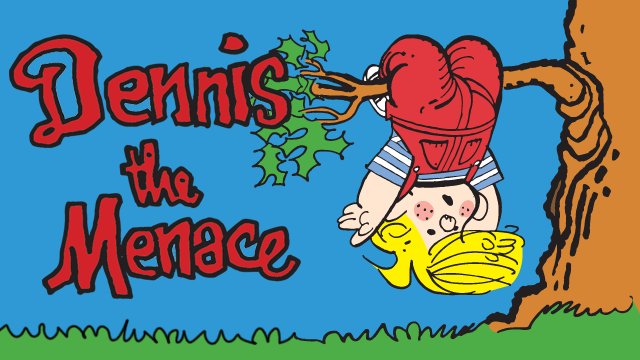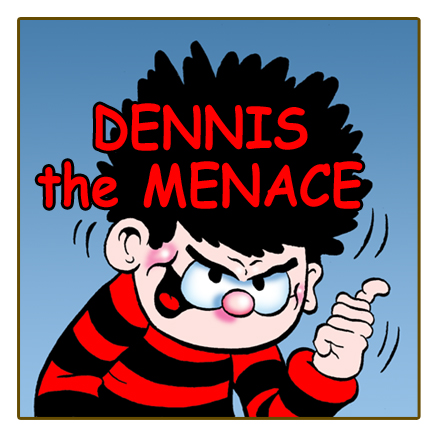Dennis the Coincidence

Dennis the Menace, pictured above, is a comic strip which was first published in the United States on March 12, 1951. It features the protagonist, Dennis Mitchell, and his penchant for causing trouble in ways both hilarious and disconcerting — and often with his dog, Ruff. Dennis the Menace has been in production for the half-century since its debut, and the franchise has expanded well outside of just paper-and-ink comics. There was a live action television series and three different animated ones; a few Dennis the Menace movies; a video game; and even a playground/park. To those of us in the United States, the blond kid with the red overalls covering a striped shirt is a cultural icon.
And to those in the UK, he’s an accidental imposter.
Dennis the Menace, pictured below, is a comic strip which was first published in the United Kingdom on March 17, 1951, five days after the U.S. version, in the Beano, a children’s comic book. The British Dennis is very similar to his American pseudo-cousin. He has a similar itch for mischief (although with somewhat of a malevolent bent) and, of course, the sidekick dog — in his case, it’s Gnasher, not Ruff. This Dennis has also made its way into television, movies, and (as a character) in a video game — and appeared as a regular character at a theme park. (Close enough.) In the UK, he, too, is a cultural icon. But the other similarities end at the striped shirt — the UK Dennis doesn’t wear overalls and has black hair.

So who copied whom? Most likely, neither Dennis is inspired by the other — it’s simply an odd coincidence.
The U.S. Dennis was created by cartoonist Hank Ketcham. Ketcham used his own family as inspiration for the strip — his real-life son’s name was Dennis and the fictional Dennis Mitchell’s parents were Henry and Alice. Hank’s real first name was Henry and Alice was his first wife and mother of the real Dennis. (Alice died in 1959 due to a drug overdose.) According to the New York Times in Ketcham’s obituary:
Mr. Ketcham was pursuing a career as a freelance cartoonist in October 1950, when his first wife, the former Alice Mahar, burst into his studio to complain that their 4-year-old, Dennis, who was supposed to be napping, had instead wrecked his bedroom. ”Your son is a menace,” she shouted.
The UK Dennis, on the other hand, has a less personal history — he is the byproduct of a doodle by the then-publisher of the Beano, Ian Chisholm, during a discussion with the strip’s eventual artist, David Law. However, there is one major salient fact which demonstrates that the British Menace is not a copy of the American one. While it appeared in the issue of the Beano dated March 17th, the publication went to press at least ten days before that date, meaning that the UK comic was drawn and published without any way of knowing about the American comic.
While this coincidence is almost certainly innocent, it has led to some problems. In 1993, the U.S. franchise came out with a movie, titled “Dennis the Menace” in most of the English-speaking world, but, because of intellectual property questions (as well as confusion generally), the title was shorted to merely “Dennis” in the UK. And currently, the British Dennis the Menace strip goes instead by the title Dennis and Gnasher, a title originally adopted for non-UK publications as to avoid confusion with the American comic. But the protagonist, is still known as Dennis the Menace.
Bonus fact: The U.S. Dennis is a blond, not a blonde. Per Merriam-Webster, “Blond” refers to the color, generally, but it is also used to refer to a man with hair of that color. When referring to a woman with blond hair, it is acceptable — albeit sometimes regarded as sexist, per Wikipedia — to use “blonde,” with an “e” at the end.
From the Archives: Schtroumpf: The salty origins of another comic.
Related: The first year of (U.S.) Dennis the Menace cartoons. 7 reviews, all of five stars. About $17 for 672 pages of comics. Also, if you’d like to compare, there’s the Dennis the Menace (UK) and Gnasher 2009 Annual, for a few cents (plus shipping) if you buy a used copy.

Leave a comment